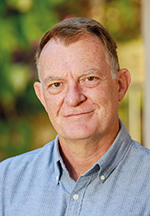

The end of 2024 is approaching very quickly, and, in this issue, we look back at this year, one that saw its fair share of ups and downs in the electronic engineering sector. Financially, 2024 proved to be another challenging year in the semiconductor market. Although an improvement was seen over the previous year, statistics shows that the market is still stabilising after 2023’s downturn. Most of the available analysis indicates that the predicted 16 to 17% growth in the market, compared to 2023, is attainable with the biggest mover this year being memory chips, largely driven by our insatiable appetite for all things AI that started when ChatGPT was released to the public in November 2022. To deal with the incredible growth in the use of AI applications, new server farms were built this year, with many more earmarked for construction in 2025.
However, for me personally, this year’s exciting announcement was in the non-terrestrial network realm.
I can still remember back to the mid-90s when the company I worked for handed me a new cellular phone, a Samsung, which amazingly had an RS232 port on it allowing me to communicate with certain equipment in the plant. Since that day, I have always had a mobile phone, and in the past 30 years have owned devices made by Samsung, Nokia, Ericsson, HTC, Palm, Sony Ericsson, and Blackberry. Each of them improved on the previous models. Communication became clearer and faster, user interfaces became more intuitive; overall, the user experience generally improved (except for the battery life when smartphones were finally introduced).
However, being someone who is involved in many outdoor activities, one thing that often let me down was the access to these terrestrial networks when travelling off the beaten track. I can fully understand why this happens – there is simply no financial incentive to install a network in an area that is unpopulated or one that hardly sees any human presence. By and large, it is great being off the ’communication grid’. No interference from the outside world to ruin a peaceful getaway.
However, there have been times when I would have felt much safer to have had a communication lifeline. Hiking in the Drakensberg mountain range is one such scenario. In my youth, I did a fair amount of hiking and in the many gorges in this mountain range, all communication is lost. Once you reach the escarpment and the border between KZN and Lesotho, communication is also scarce. If a hiker gets into trouble in such an area, it can quickly become life threatening.
Now, imagine a world where your mobile device can communicate from anywhere on the surface of the Earth. An amazing thought, isn’t it? This is the promise of non-terrestrial network coverage. Currently in two versions, NTN-IoT and NTN-NR, these systems promise ubiquitous coverage no matter where you may find yourself.
NTN communication encompasses various wireless communication networks operating via satellite, mostly in low and medium Earth orbit (LEO and MEO), but also in Geostationary orbit (GEO) when the increased latency is not an issue.
NTN-IoT increases the coverage of IoT devices globally at GEO and LEO altitudes, providing communication for short messages from within areas where any form of communication would have been impossible. NTN-NR is an even more exciting prospect for me as it uses satellites in LEO to allow smartphones and 5G devices to communicate, providing data, voice and messaging services. There is currently a global race to create these LEO NTN satellite constellations, with many companies competing, including SpaceX, Amazon, Iridium, and Telesat.
2024 saw many NTN chips being released onto the market from various semiconductor companies. I am excited for the day I can purchase a mobile device that can switch between terrestrial and non-terrestrial networks seamlessly. As a ‘Trekkie’, I can liken this device to the Start Trek Communicator, a fictional device used for voice communication, and which could also be used as an emergency/signalling beacon.
| Tel: | +27 11 543 5800 |
| Email: | [email protected] |
| www: | www.technews.co.za |
| Articles: | More information and articles about Technews Publishing |

© Technews Publishing (Pty) Ltd | All Rights Reserved